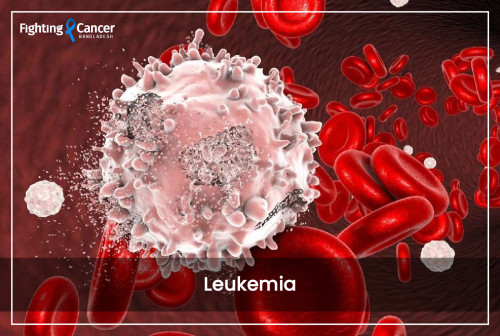
Leukemia occurs in the early blood-forming cells, leukocytes. While leukemia mostly starts in white blood cells, some leukemias also start in other blood cell types. Leukemia progresses when the genetic material (DNA) in the white blood cells is damaged or changed which impedes the maturation and functionality of these cells. They would just multiply and accumulate in the bone marrow stopping the production of normal white and red blood cells and platelets, this condition progresses to leukemia.
Leukemia can be acute lymphocytic leukemia (ALL), acute myeloid leukemia (AML), chronic lymphocytic leukemia (CLL), chronic myeloid leukemia (CML), myeloproliferative neoplasms, and systemic mastocytosis.
Statistics
Leukemia has estimated new cases of 60,530, it forms 3.4% of all new cancers reported with 23,100 deaths.
Risk Factors And Symptoms
- Exposure to cancer-causing agents
- High doses of radiation
- Long-term exposure to high levels of solvents such as benzene, Agent Orange
- Smoking
- History of radiation therapy or chemotherapy
- Rare genetic syndromes
- People with Down syndrome
- Fanconi anemia
- Ataxia-telangiectasia and Bloom's syndrome are at slightly higher risk for developing leukemia
- Prior family history
Symptoms include anemia, bruising, and bleeding, resulting from low levels of platelets, the blood component crucial to blood clotting and wound healing, infections caused by low levels of disease-fighting white blood cells, fevers, drenching night sweats, unintentional weight loss, and fatigue, weakness, tiredness and fatigue, fever and frequent infections, night sweats, easy bleeding and bruising, including bleeding of the gums, Petechiae (a rash-like collection of pinpoint spots on the skin caused by bleeding into the skin), shortness of breath, swollen lymph nodes in the neck, underarm, stomach or groin, loss of appetite or a full feeling after eating very little food due to enlargement of the spleen, unexplained weight loss, bone, and joint pain, and for female patients, longer than normal or heavier than normal menstruation.
Prevention
There is no way of preventing bone cancer.
Treatment
Targeted therapy, chemotherapy, CAR T cell therapy or other types of immunotherapy bone marrow or hematopoietic stem cell transplantation are the treatment options.

